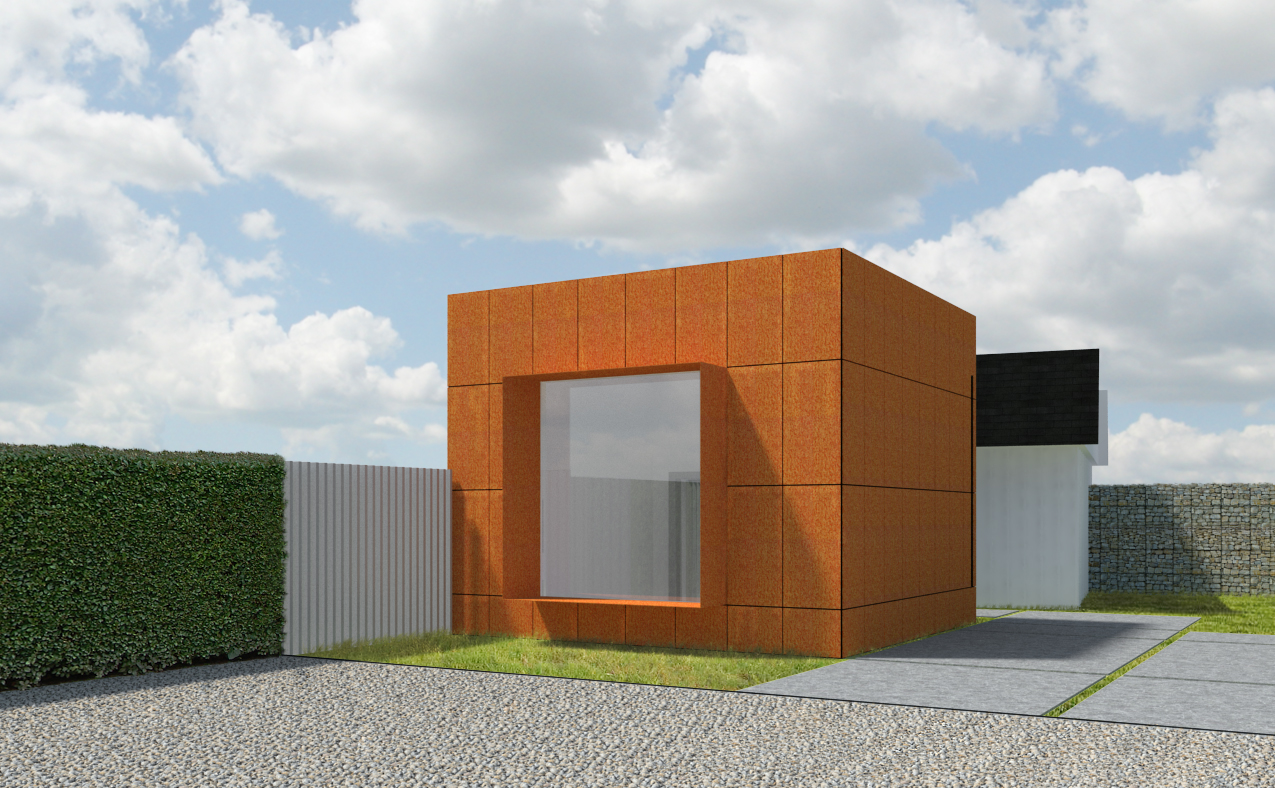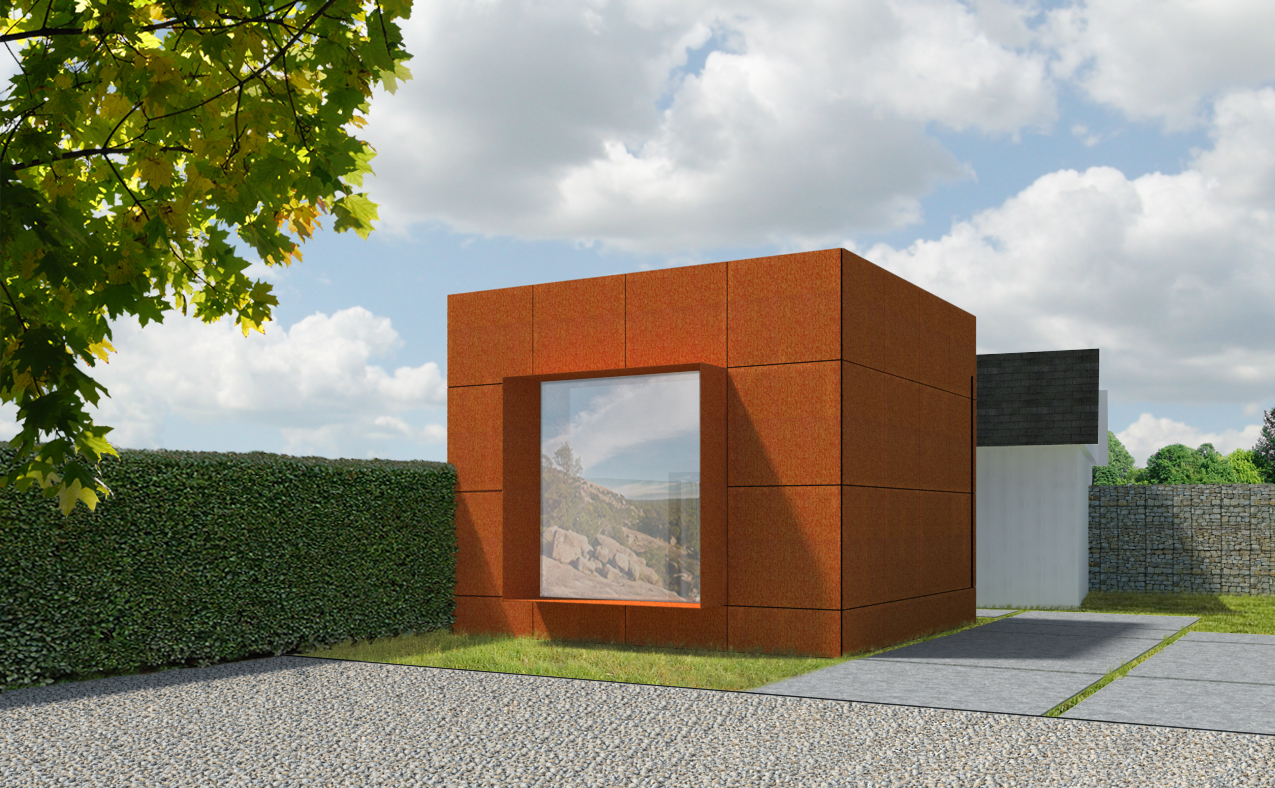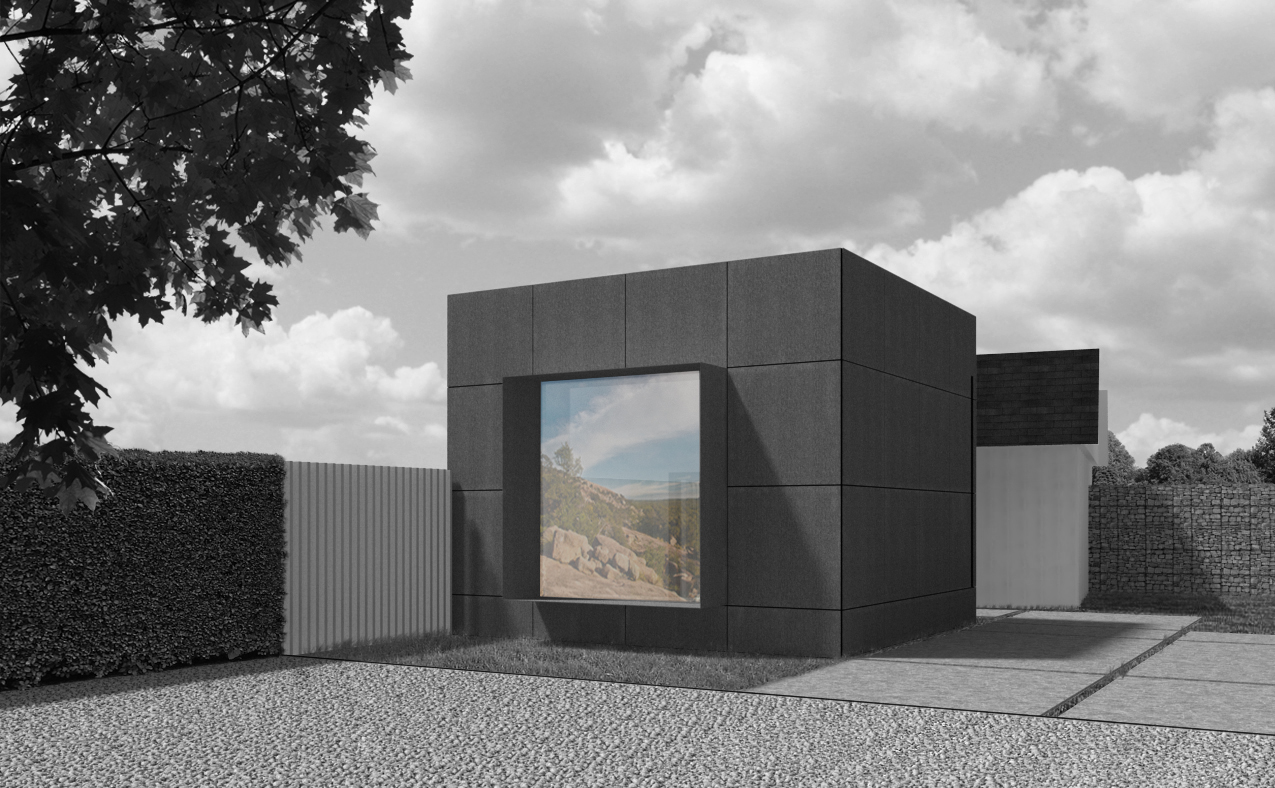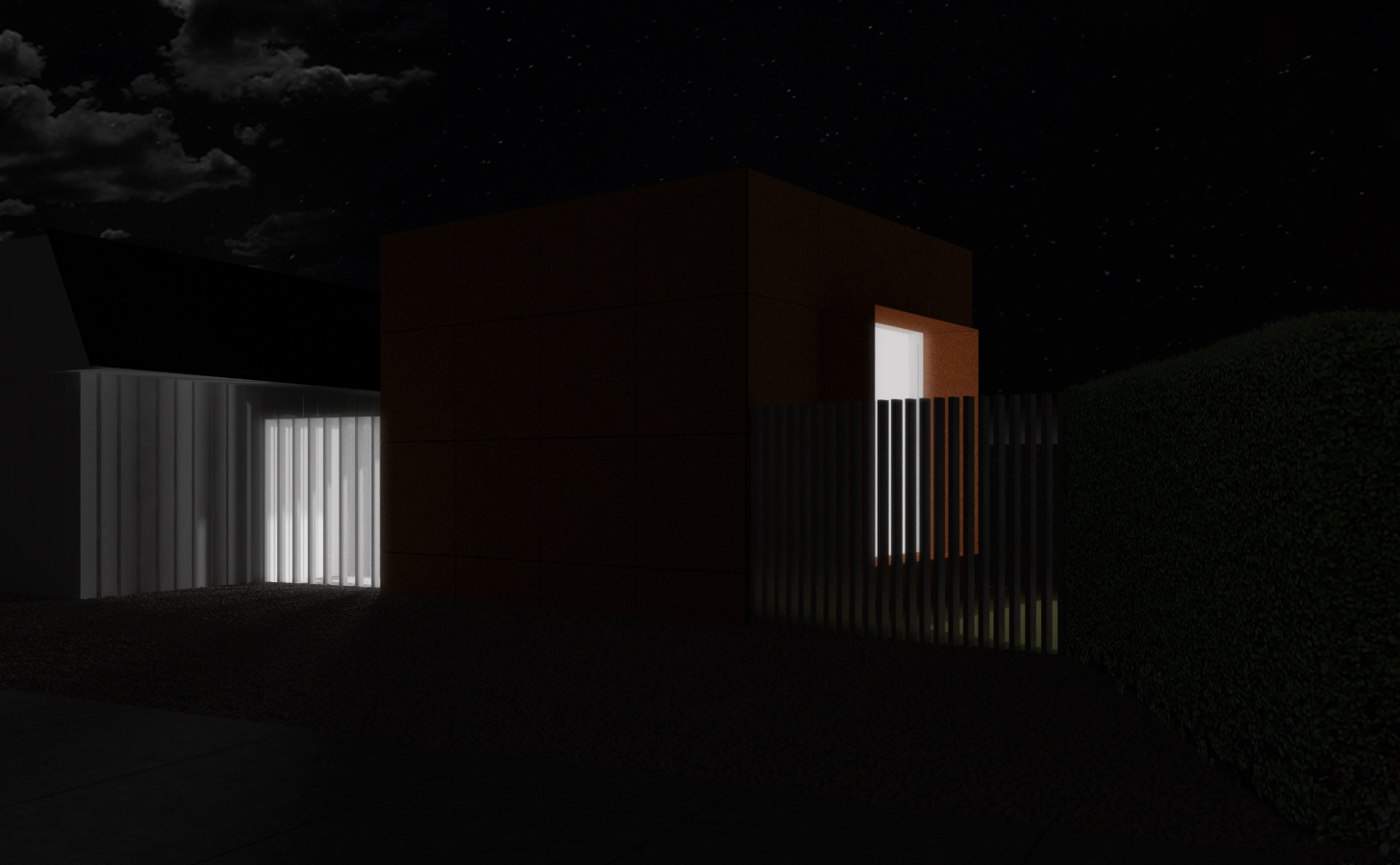Constructive Rendering Criticism
-
@roger said:
The gray window is very confusing. Is it a window? If I am looking through it, I should see some hint of what is in teh building, not what seems to be a Southwestern scene. If it is a reflection from the outside, It should show elements of the courtyard. And, in any case, the scene would have some color in it, it would never be neutral gray.
Also, the top of the white fence is spikey, but its shadow is not spikey.
The white building in the background does not read properly. The end of the building is shown side on as a straight line. That should not happen if the white building is parallel to the red one. And even if that was a true perspective, you should move the camera as the result of that angle is visually ambiguous.
The purpose of the image on the window was to reflect the projector that will be installed inside the steel box which will show images on the window.
Copy that on the white building. It actually isn't parallel to the rust building which is why it looks awkward. I will have to address that problem I guess.
Thanks for your crits.
-
I will keep my comments to the image itself and not the technical and texture stuff because that seems to have been covered already. In creating a successful image you must think about your composition. Firstly, the proportion of your image. It seems that you are just using whatever size comes out of SU. Take advantage of the crop tool. Use a proportion that works for the image, something more horizontal like 1:1.618 (golden mean) and think about how that image lays out using the rule of thirds. Place foreground trees in a way that they peek out from the corners of the image and cast a shadow in front of you and not back towards you. Unless a client wants to specifically see the exact shadows I almost always cheat them so I can get the best looking lighting and not neccessarily the correct condition. Your shadows are part of our composition, think about them carefully. Here are some great articles on compositioning http://photoinf.com/Golden_Mean/. This is the absolute #1 thing to learn before texturing and lighting when it comes to rendering. You are afterall taking a virtual photograph.
-
@jm2 said:
@roger said:
The gray window is very confusing. Is it a window? If I am looking through it, I should see some hint of what is in teh building, not what seems to be a Southwestern scene. If it is a reflection from the outside, It should show elements of the courtyard. And, in any case, the scene would have some color in it, it would never be neutral gray.
Also, the top of the white fence is spikey, but its shadow is not spikey.
The white building in the background does not read properly. The end of the building is shown side on as a straight line. That should not happen if the white building is parallel to the red one. And even if that was a true perspective, you should move the camera as the result of that angle is visually ambiguous.
The purpose of the image on the window was to reflect the projector that will be installed inside the steel box which will show images on the window.
Copy that on the white building. It actually isn't parallel to the rust building which is why it looks awkward. I will have to address that problem I guess.
Thanks for your crits.
If the image is being projected outward you would see a shadow on the screen from the protruding shade. The part of the image in the shade would would show at close to full value and the projected image in the sun struck part of the screen would be faded or even impossible to see. The person on the screen is a visually ambiguous. Maybe he is part of the protected image, maybe he is standing in the cube in front of the projector or perhaps he is a shadow on the outside cast by a person we don't see.
Don't be afraid to search the net for visual references or take the time to create crude models as a way of making a reality check before rendering via post processing.
Some render artists you conventions for things like glass when they don't really understand a setting or are to lazy to build a complete model. However, a couple of angled parallel lines across a glass surface are usually the sign of a lesser artist. The key is a lifetime of accurate observation.
-
Thought I would post an updated rendering of the original image I posted. Still adding the finishing touches in PS, but overall I'm really happy with the results. Thanks to everyone for their advice


-
nice work!
-
much better

Are you adding trees back in post-pro? -
@andybot said:
much better

Are you adding trees back in post-pro?Here are the two final renderings I did for the architect. We are actually going to show the client the black and white one but I thought the color looked good as well. I'm working on a second daytime rendering as well as a night rendering. I will post those within the next week. Thanks again for the tips!


-
Looks nice, but I must say I'm a little confused by the Reflection or Image, it doesn't seem to reflect the correct subject if it is a reflection and it has colour in the black and white.
-
I was farther along than I thought I was, so here's the night rendering. I'm not as happy with this one, but for being my first one, I was still pleased.

-
I haven't done any post-pro work on it yet, but here's the other view of the project.

-
@box said:
Looks nice, but I must say I'm a little confused by the Reflection or Image, it doesn't seem to reflect the correct subject if it is a reflection and it has colour in the black and white.
I know it is a little confusing...the window will serve both for viewing and light, as well as a projection screen for art.
-
@jm2 said:
@andybot said:
much better

Are you adding trees back in post-pro?Here are the two final renderings I did for the architect. We are actually going to show the client the black and white one but I thought the color looked good as well. I'm working on a second daytime rendering as well as a night rendering. I will post those within the next week. Thanks again for the tips!
JM2, there is still a problem, but you are getting much closer to a good result. Let me see if I can explain properly. The area of the projection screen shaded by the window frame projection should have saturated or at least more saturated color.
-
@roger said:
@jm2 said:
@andybot said:
much better

Are you adding trees back in post-pro?Here are the two final renderings I did for the architect. We are actually going to show the client the black and white one but I thought the color looked good as well. I'm working on a second daytime rendering as well as a night rendering. I will post those within the next week. Thanks again for the tips!
JM2, there is still a problem, but you are getting much closer to a good result. Let me see if I can explain properly. The area of the projection screen shaded by the window frame projection should have saturated or at least more saturated color.
Ahh...I understand now. The image would be saturated in that area due to the image being shaded by the window frame projection. I would assume it would be a combination of more saturation and a darker tone?Thanks.
-
Not necessarily darker as the projection light source is independent of the exterior sunlight.
When in doubt, I will google for an example and if that produces nothing I will do a small quick-and-dirty mockup to study the effect I am trying to reproduce.
Of course, you can also build the projection effect right into your model and not have to do anything in post. However if you understand what the result will be it can be quicker to fake it.
Advertisement







